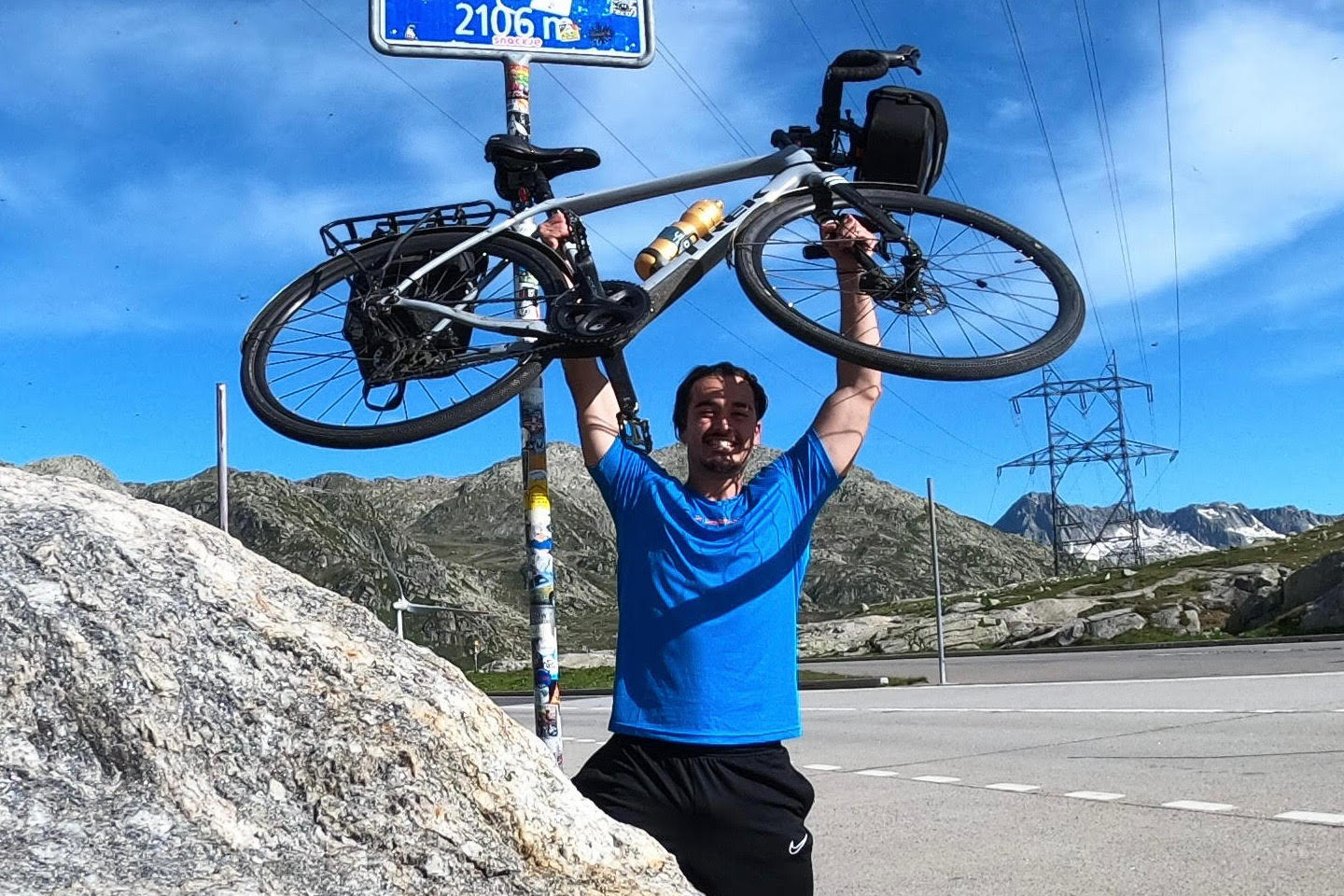Luca's North Cape Tour Donation Challenge
For the preservation of the most biodiverse rainforest
Luca is riding his bike from Olso to the North Cape in June 2023. He wants to cover the distance of about 2000 kilometers in 14 days and without the use of a cell phone or GPS.
The Challenge
With the donation challenge Luca supports the protection of the rainforest in eastern Peru.
10,000 square meters of rainforest need to be protected. Your support is needed now - donate strongly!
If the goal is not reached, Luca will donate 1000 francs out of his own pocket.

Donations
m2 of old-growth forest
tonnes of CO2
Your donation at a glance:
Concrete use: 1 € donation protects 1 m² rainforest
good for the climate: 60 kg of CO2 remain permanently bound in living biomass
Transparent: you will receive a certificate with the geo-coordinates and an aerial photo of the protected forest area
Lasting impact: your one-time donation guarantees the permanent protection of the area
Tax-deductible donation with donation receipt
Country: Peru
Region: Madre de Dios
Location of the protected area: along the Tambopata River, about 30 km southwest of the city of Puerto Maldonado
Ecosystem: tropical Amazon rainforest
Impressions from the rainforest in Peru
The Secret Forest rainforest is located in the Madre de Dios region in Peru. There are 10 times more reptiles and amphibians than in Germany, about 10% of all bird species in the world can be observed here and on one hectare of forest you can find about 400 tree species, more than in all of Europe north of the Alps.

Weighing up to 75 kg, capybaras are the largest rodents in the world.

Imposing buttress roots provide stability for the jungle's giant trees.


When the sun rises over the rainforest along the Tambopata River, the forest begins to breathe.
Protect Luca's North Cape Tour Donation Challenge Rainforest
About Wilderness International
The foundation, which is based in Peru, Canada and Germany, purchases legally secure wilderness areas and protects them for the future. The purchases are refinanced through donations, which ensure the long-term protection of the areas, supports environmental education projects, and research into CO2 storage and biodiversity.

Wilderness International purchases primary rainforest areas with land title and legally protects them for all future. Donations refinance the purchases and at the same time finance long-term protection as well as environmental education and research. Donors receive a personalized certificate with the exact geo-coordinates and aerial photograph of the forest area they are protecting. Thus, the use and impact of the donation is tangible and directly traceable. We are currently working in the temperate rainforest of Western Canada and the Amazon rainforest of Peru, where we are protecting ancient primary rainforests.
It is important to protect the rainforest because this is the only way we can stop species extinction and climate change. They are home to the world's greatest biodiversity and store huge amounts of CO2. It is also important to protect rainforests because they are the basis of our existence: they provide us with clean air, clean water and stable rainfall. They also cool the environment.
In Canada, good legal security helps us, as well as the legal situations and sanctions that even prohibit trespassing.
In Peru, we have additionally started a forest guardian program with local people. To ensure long-term protection, we also have several other measures in place. In general, we visit the areas on regular expeditions to check on them. We also work with local partners who inform us of any irregularities if necessary. The donations per square meter also already include the costs for property taxes.
Like no other, the legal form of the foundation allows a (charitable) purpose to be realized permanently and independently of outside interests, thus achieving the desired effects in the long term. It is thus the most long-term organizational construct currently known. Not even states, companies or national parks are designed for such a long term. This makes the foundation the only one that is oriented toward the lifespan of the ecosystems we protect.